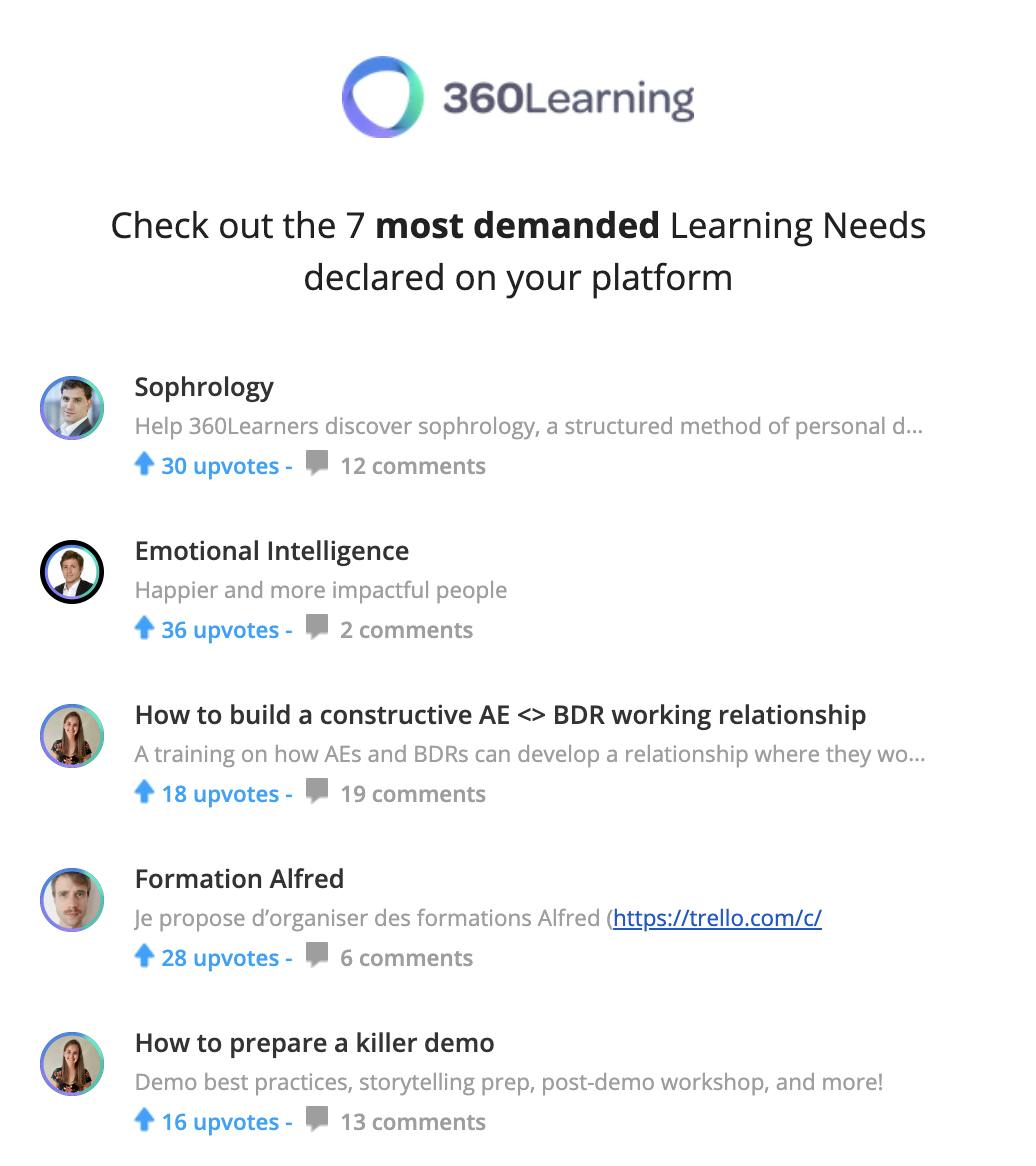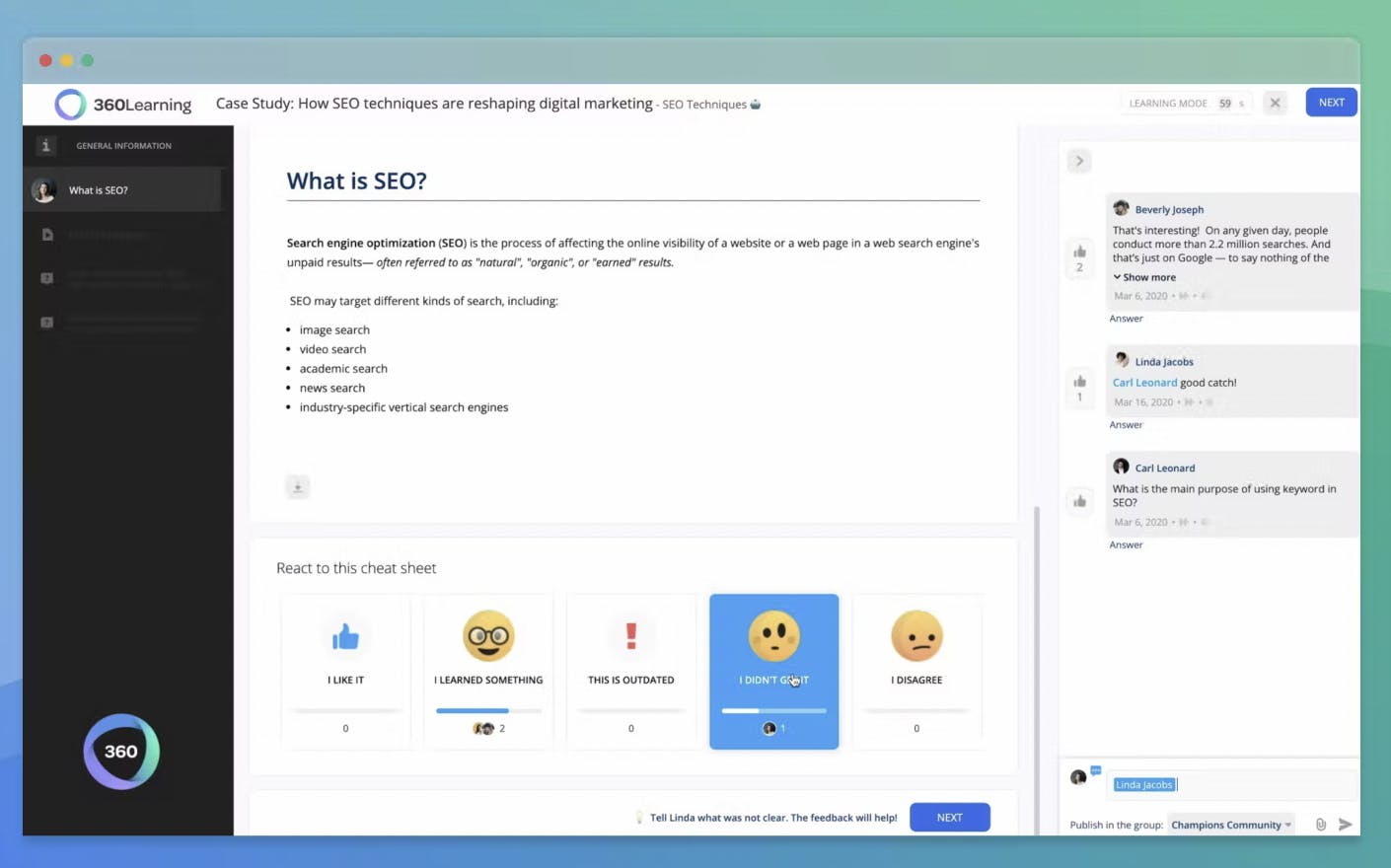Building a learning and development cycle is quite like riding a bicycle—set the wheels in motion, and it becomes easier to maintain a constant rhythm.
A learning and development cycle is a circular process where you identify training needs, create training courses or opportunities, deliver the training, and evaluate what employees learned. As businesses grow and new training needs arise, you repeat the process.
But if an effective training cycle were that simple to implement, organisations wouldn’t be facing a reskilling crisis. In the UK, studies estimate 30.5 million workers (94% of the workforce) lack the skills they will need in 2030 to do their jobs well. Of these, 25.5 million would advance with upskilling—learning new skills—and five million need to be retrained to improve their performance.
A cyclical L&D strategy can help you become a true learning organisation, where professional development isn’t about taking a one-time course or earning a certificate. When you intentionally bake learning and development into your company operations, it becomes an ongoing process that surfaces learning needs and helps employees find answers and learn new skills from peers within the organisation. That’s a learning and development cycle.
Adopt a bottom-up approach to identifying training needs
A crucial first step to a strong learning and development cycle is to identify the training employees need to do their jobs better. But not just any old method of identifying training needs will do. You need to approach training from the bottom up—ask your employees where they get stuck in the course of work and which skills would help them excel at their jobs.
Most training programmes fail because they aren’t addressing the right needs or are only offering training and coaching sporadically and not at the point of need. Traditionally, needs assessment is an L&D team’s job. But in most cases you aren’t the ones doing the actual work, so you may not know the roadblocks and struggles people have in their role. It’s like asking a software developer to create a course for your sales team on sales best practices.
So, when deciding what training will be most useful, many L&D leaders look at business outcomes, send out a survey, or ask for feedback from managers. That’s a roundabout way of seeking answers.
Instead, democratise the training cycle by handing over the power of choice to your teams with a bottom-up approach. A collaborative learning tool prompts employees to declare learning needs and share them with peers. Anyone on the team who has a similar learning need can upvote it. The learning needs with the highest number of votes are shown in a prioritised list. As a result, you get the maximum return on training.

This decentralised method of performing a training needs analysis is quick and collaborative and helps learners develop the right competencies. It gives your L&D team visibility into what employees want to learn and creates a training roadmap that is custom-built for learners. Get this step right and you’re off to a good start.
Next up? Incorporating feedback into your learning and development cycle.

Simplify your training needs analysis with our free template
By providing your contact info, you agree to receive communications from 360Learning. You can opt-out at any time. For details, refer to our Privacy Policy.
Create a constructive peer feedback loop
Feedback is one of the most effective ways of keeping the learning and development cycle in motion. And the quality of feedback on a task has a direct impact on the quality of learning. Feedback should be a comfortable exchange and something you can engage with while you “SIT BACK” (Specific, Individualised, Timely, Balanced, Accurate, Clear, and Kind feedback).
Often, feedback is ineffective because it is not constructive or personalised or is given too late. If you wait for an annual performance review to provide feedback on a current task, it loses relevance, and you are taking away learning experiences from employees.
Annual performance reviews eliminate the timely aspect, and they also tend to feel one-sided (i.e., not constructive) and formal. This prevents feedback from being as personalised as it could be — annual reviews happen in batches, so managers may not spend time on each employee’s needs.
Collaborative learning, on the other hand, encourages peers to give and receive feedback in their regular workflow. Employees can post questions on discussion forums and get real-time answers, which they can immediately apply to their tasks. Peers can also react to training content and provide feedback.

This type of feedback loop engages employees and helps L&D teams understand which parts of the training material need further clarification. The discussions benefit future course takers who may have similar queries, and the interaction becomes an organic part of the learning and development cycle.
Identify and develop internal subject-matter experts
Your employees come with a wealth of knowledge and skills from past and current work experiences. Identify these subject-matter experts (SMEs) and encourage them to share and teach their peers.
A culture of collaboration is immensely gratifying—when we help others, it releases “happiness” chemicals in our brains and leads to higher job satisfaction and employee retention. Plus, with a continuous exchange of knowledge, your learning and development cycle keeps moving in a steady rhythm.
Too often, L&D leaders rely on external instructors to create new learning courses, and the repository of knowledge remains siloed in employees’ heads. Also, hiring instructional designers is expensive and time-consuming, especially when one of your own employees could have created the same course in minutes.
A collaborative LMS comes with an authoring tool, which means employees can volunteer to create a course on a subject they have expertise in. If that subject is identified as a popular learning need, you can call on the SME to become a course author. With an onboarding course, they can learn how to create a course quickly and easily.
Through using this type of platform, course authors can use text, images, activities, videos, case studies, and questions to make the content interactive and fun. Once the course is ready and live, you can recognise their efforts and congratulate them, which helps them rank higher on the internal leaderboard.
Internal experts who create training programmes often want to repeat the experience because it’s rewarding. This is great when it comes to keeping your training cycle up to date. Companies like Aircall have used this development strategy to leverage their SMEs, saving time and money.
Another step to an effective learning and development cycle is to focus on microlearning. Read on to learn more about this approach.
Lean on microlearning to develop highly skilled teams
Employees don’t want to sit through outdated, boring, and lengthy training sessions, especially when more attractive training options are available. Microlearning, for example, uses bite-sized chunks of training to help employees learn in their moment of need—a strategy that reflects learners’ changing needs.
Research in the UK has shown that attention spans have diminished. That doesn’t mean employees don’t want to learn. In fact, according to the Employee Well-Being Report, having “opportunities to learn and grow” has become the topmost driver of work culture.
With rapid digitisation, employees don’t need to commit information to memory. Most workers prefer a learning process where they apply short kernels of knowledge to their tasks.
Experts say the ideal length for eLearning content should be 10-13 minutes because it makes retaining the information easier and more digestible. Because the lessons are short, employees can access them as needed. This keeps learning in the flow of their work, increasing the chances they'll retain the skill.
Microlearning coupled with learning in the flow of work is one of the most effective L&S strategies out there. To make this even more successful, add in a layer of coaching.
Encourage employee coaching among peers and managers
UK employees are tired of overbearing bosses. They want to work with managers who are invested in their learning and development and provide opportunities for career growth. In short, they want collaborative coaches, not autocratic bosses.
Employee coaching has a huge part to play in the learning and development cycle of an organisation because it encourages people to adopt new behaviours, not just specific skills. Plus, the coaching comes from peers, not just supervisors.
Our survey of 784 British employees revealed that employees are leaving toxic workplaces—they want fulfillment from work and better career prospects. The most competitive organisations have managers who dedicate 1:1 time to their direct reports and understand their team’s career aspirations. This helps managers identify skills gaps and set measurable learning goals, so they can create a step-by-step training plan that could include mentors, role play, and simulations.
Setting personalised Key Performance Indicators (KPIs) and Objectives and Key Results (OKRs) can help both the manager and team members visualise the types of training they need and outline their development process.
But, there’s also significant value to in-the-moment coaching, especially when employees are struggling and need help. In a collaborative learning culture, this is where peers can also step in to listen, help, and coach employees in a way that encourages continuous learning and expresses support. In other words, a learning development cycle doesn’t always have to be formally instituted; it can be an organic part of the workplace culture.
Pivot to an agile approach for a robust learning and development cycle
To be effective in an age of rapid digitisation and automation, a learning and development cycle needs to be flexible, speedy, and collaborative. Agile principles are perfectly suited for strengthening your learning and development cycle because they involve incremental progress.
Even though these principles were originally applied to software development, the idea of creating training in smaller chunks, collecting feedback, and implementing the feedback before building again results in a robust learning and development cycle.



